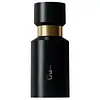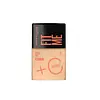What's inside
What's inside
 Key Ingredients
Key Ingredients

 Benefits
Benefits

 Concerns
Concerns

 Ingredients Side-by-side
Ingredients Side-by-side

Water
Skin ConditioningCyclopentasiloxane
EmollientTitanium Dioxide
Cosmetic ColorantEthylhexyl Methoxycinnamate
UV AbsorberMethyl Trimethicone
Skin ConditioningGlycerin
HumectantButylene Glycol
HumectantEthylhexyl Salicylate
UV AbsorberPolymethylsilsesquioxane
Isononyl Isononanoate
EmollientNiacinamide
Smoothing1,2-Hexanediol
Skin ConditioningPolysorbate 60
EmulsifyingTridecyl Trimellitate
EmollientMethyl Methacrylate Crosspolymer
Triceteareth-4 Phosphate
EmulsifyingGlycol Stearate
EmollientPotassium Cetyl Phosphate
EmulsifyingBis-Ethylhexyloxyphenol Methoxyphenyl Triazine
Skin ConditioningGlyceryl Stearate
EmollientPEG-100 Stearate
PEG-2 Stearate
EmulsifyingVp/Eicosene Copolymer
Ammonium Acryloyldimethyltaurate/Vp Copolymer
Aluminum Hydroxide
EmollientPolyhydroxystearic Acid
EmulsifyingPEG-10 Dimethicone
Skin ConditioningTriethoxycaprylylsilane
Stearic Acid
CleansingSodium Acrylate/Sodium Acryloyldimethyl Taurate Copolymer
Emulsion StabilisingAdenosine
Skin ConditioningPEG-240
HumectantNeopentyl Glycol Diethylhexanoate
EmollientIsohexadecane
EmollientTrisodium Ethylenediamine Disuccinate
Polysorbate 80
EmulsifyingSorbitan Oleate
EmulsifyingPotassium Laurate
EmulsifyingBHT
AntioxidantBakuchiol
AntimicrobialMadecassoside
AntioxidantHyaluronic Acid
HumectantHydrolyzed Hyaluronic Acid
HumectantSodium Hyaluronate
HumectantArtemisia Capillaris Extract
Phenoxyethanol
PreservativeArtemisia Princeps Leaf Extract
Skin ConditioningXanthium Strumarium Fruit Extract
Skin ConditioningPrunella Vulgaris Flower/Leaf/Stem Extract
Skin ProtectingCetraria Islandica Extract
CleansingOleanolic Acid
Skin ConditioningEthylhexylglycerin
Skin ConditioningCopper Tripeptide-1
Skin ConditioningAcetyl Hexapeptide-8
HumectantCI 77492
Cosmetic ColorantCI 77491
Cosmetic ColorantCI 77499
Cosmetic ColorantWater, Cyclopentasiloxane, Titanium Dioxide, Ethylhexyl Methoxycinnamate, Methyl Trimethicone, Glycerin, Butylene Glycol, Ethylhexyl Salicylate, Polymethylsilsesquioxane, Isononyl Isononanoate, Niacinamide, 1,2-Hexanediol, Polysorbate 60, Tridecyl Trimellitate, Methyl Methacrylate Crosspolymer, Triceteareth-4 Phosphate, Glycol Stearate, Potassium Cetyl Phosphate, Bis-Ethylhexyloxyphenol Methoxyphenyl Triazine, Glyceryl Stearate, PEG-100 Stearate, PEG-2 Stearate, Vp/Eicosene Copolymer, Ammonium Acryloyldimethyltaurate/Vp Copolymer, Aluminum Hydroxide, Polyhydroxystearic Acid, PEG-10 Dimethicone, Triethoxycaprylylsilane, Stearic Acid, Sodium Acrylate/Sodium Acryloyldimethyl Taurate Copolymer, Adenosine, PEG-240, Neopentyl Glycol Diethylhexanoate, Isohexadecane, Trisodium Ethylenediamine Disuccinate, Polysorbate 80, Sorbitan Oleate, Potassium Laurate, BHT, Bakuchiol, Madecassoside, Hyaluronic Acid, Hydrolyzed Hyaluronic Acid, Sodium Hyaluronate, Artemisia Capillaris Extract, Phenoxyethanol, Artemisia Princeps Leaf Extract, Xanthium Strumarium Fruit Extract, Prunella Vulgaris Flower/Leaf/Stem Extract, Cetraria Islandica Extract, Oleanolic Acid, Ethylhexylglycerin, Copper Tripeptide-1, Acetyl Hexapeptide-8, CI 77492, CI 77491, CI 77499
Water
Skin ConditioningHomosalate
Skin ConditioningDicaprylyl Ether
EmollientGlycerin
HumectantSilica
AbrasiveAlcohol Denat.
AntimicrobialEthylhexyl Salicylate
UV AbsorberOctocrylene
UV AbsorberPolyglyceryl-4 Isostearate
EmulsifyingDisteardimonium Hectorite
StabilisingTribehenin
EmollientPEG-30 Dipolyhydroxystearate
EmulsifyingSynthetic Fluorphlogopite
Sodium Chloride
MaskingPhenoxyethanol
PreservativeSilica Silylate
EmollientAscorbyl Glucoside
AntioxidantDisodium Stearoyl Glutamate
CleansingEthylhexylglycerin
Skin ConditioningAdenosine
Skin ConditioningAluminum Hydroxide
EmollientTocopherol
AntioxidantCI 77891
Cosmetic ColorantCI 77491
Cosmetic ColorantCI 77492
Cosmetic ColorantCI 77499
Cosmetic ColorantWater, Homosalate, Dicaprylyl Ether, Glycerin, Silica, Alcohol Denat., Ethylhexyl Salicylate, Octocrylene, Polyglyceryl-4 Isostearate, Disteardimonium Hectorite, Tribehenin, PEG-30 Dipolyhydroxystearate, Synthetic Fluorphlogopite, Sodium Chloride, Phenoxyethanol, Silica Silylate, Ascorbyl Glucoside, Disodium Stearoyl Glutamate, Ethylhexylglycerin, Adenosine, Aluminum Hydroxide, Tocopherol, CI 77891, CI 77491, CI 77492, CI 77499
 Reviews
Reviews

Ingredients Explained
These ingredients are found in both products.
Ingredients higher up in an ingredient list are typically present in a larger amount.
Adenosine is in every living organism. It is one of four components in nucleic acids that helps store our DNA.
Adenosine has many benefits when used. These benefits include hydrating the skin, smoothing skin, and reducing wrinkles. Once applied, adenosine increases collagen production. It also helps with improving firmness and tissue repair.
Studies have found adenosine may also help with wound healing.
In skincare products, Adenosine is usually derived from yeast.
Learn more about AdenosineAluminum Hydroxide is a form of aluminum. It can be naturally found in nature as the mineral gibbsite. In cosmetics, Aluminum Hydroxide is used as a colorant, pH adjuster, and absorbent.
As a colorant, Aluminum Hydroxide may add opacity, or reduce the transparency. Aluminum hydroxide is contains both basic and acidic properties.
According to manufacturers, this ingredient is an emollient and humectant. This means it helps hydrate the skin.
In medicine, this ingredient is used to help relieve heartburn and help heal ulcers.
There is currently no credible scientific evidence linking aluminum hydroxide in cosmetics to increased cancer risk.
Major health organizations allow the use of aluminum hydroxide in personal care products and have not flagged it as a carcinogenic risk at typical usage levels.
Learn more about Aluminum HydroxideCi 77491 is also hydrated iron III oxide. It's sole purpose is to give a red/pink hue to products.
Iron III oxides are classified as inorganic chemicals for coloring.
Synthetically created Ci 77491 is considered safer than those naturally found. This is because the synthetically created version may contain less impurities. Iron oxides are generally non-toxic and non-allergenic.
Learn more about CI 77491Ci 77492 is also hydrated iron III oxide. It's sole purpose is to give a yellow hue to products.
Iron III oxides are classified as inorganic chemicals for coloring.
Synthetically created Ci 77492 is considered safer than those naturally found. This is because the synthetically created version may contain less impurities. Iron oxides are generally non-toxic and non-allergenic.
Learn more about CI 77492Ci 77499 is also hydrated iron III oxide. It is created from mixing red and black iron oxides. This helps give shades of darkness to a product.
Iron III oxides are classified as inorganic chemicals for coloring.
Ethylhexyl Salicylate is an organic compound used to block UV rays. It primarily absorbs UVB rays but offers a small amount of UVA protection as well.
Commonly found in sunscreens, Ethylhexyl Salicylate is created from salicylic acid and 2-ethylhexanol. You might know salicylic acid as the effective acne fighter ingredient and BHA.
The ethylhexanol in this ingredient is a fatty alcohol and helps hydrate your skin, similar to oils. It is an emollient, which means it traps moisture into the skin.
According to manufacturers, Ethylhexyl Salicylate absorbs UV wavelength of 295-315 nm, with a peak absorption at 307-310 nm. UVA rays are linked to long term skin damage, such as hyperpigmentation. UVB rays emit more energy and are capable of damaging our DNA. UVB rays cause sunburn.
Learn more about Ethylhexyl SalicylateEthylhexylglycerin (we can't pronounce this either) is commonly used as a preservative and skin softener. It is derived from glyceryl.
You might see Ethylhexylglycerin often paired with other preservatives such as phenoxyethanol. Ethylhexylglycerin has been found to increase the effectiveness of these other preservatives.
Glycerin is already naturally found in your skin. It helps moisturize and protect your skin.
A study from 2016 found glycerin to be more effective as a humectant than AHAs and hyaluronic acid.
As a humectant, it helps the skin stay hydrated by pulling moisture to your skin. The low molecular weight of glycerin allows it to pull moisture into the deeper layers of your skin.
Hydrated skin improves your skin barrier; Your skin barrier helps protect against irritants and bacteria.
Glycerin has also been found to have antimicrobial and antiviral properties. Due to these properties, glycerin is often used in wound and burn treatments.
In cosmetics, glycerin is usually derived from plants such as soybean or palm. However, it can also be sourced from animals, such as tallow or animal fat.
This ingredient is organic, colorless, odorless, and non-toxic.
Glycerin is the name for this ingredient in American English. British English uses Glycerol/Glycerine.
Learn more about GlycerinPhenoxyethanol is a preservative that has germicide, antimicrobial, and aromatic properties. Studies show that phenoxyethanol can prevent microbial growth. By itself, it has a scent that is similar to that of a rose.
It's often used in formulations along with Caprylyl Glycol to preserve the shelf life of products.
Water. It's the most common cosmetic ingredient of all. You'll usually see it at the top of ingredient lists, meaning that it makes up the largest part of the product.
So why is it so popular? Water most often acts as a solvent - this means that it helps dissolve other ingredients into the formulation.
You'll also recognize water as that liquid we all need to stay alive. If you see this, drink a glass of water. Stay hydrated!
Learn more about Water